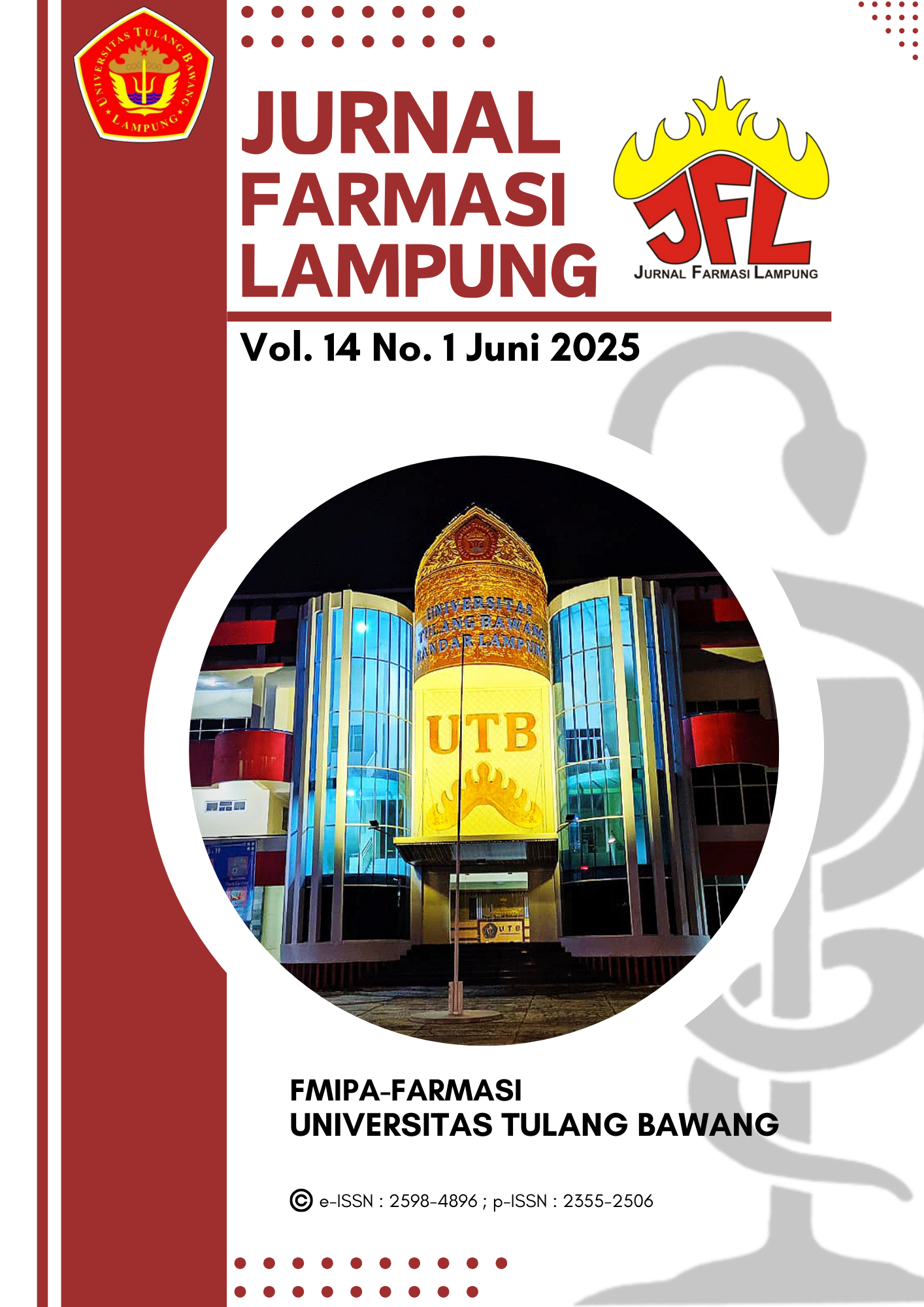ANALISIS KUALITATIF DAN KUANTITATIF PENGGUNAAN ANTIBIOTIK PADA PASIEN PASCA OPERASI LAPAROTOMI DI RUANG ICU RSUD JENDERAL AHMAD YANI METRO LAMPUNG TAHUN 2023
ANALISIS KUALITATIF DAN KUANTITATIF PENGGUNAAN ANTIBIOTIK PADA PASIEN PASCA OPERASI LAPAROTOMI DI RUANG ICU RSUD JENDERAL AHMAD YANI METRO LAMPUNG TAHUN 2023
DOI:
https://doi.org/10.37090/jfl.v14i1.2522Abstract
Laparotomy is a surgery performed to open the abdomen, a form of major surgery by cutting the layers of the abdominal wall, risking causing infection of the surgical wound where antibiotics are given as treatment. Antibiotic resistance can lead to increased morbidity, mortality and health costs, therefore there needs to be an analysis for the use of antibiotics. The analysis of the use of antibiotics was carried out in the ICU room of the General Ahmad Yani Metro Lampung Hospital with the aim of analyzing how to use antibiotics qualitatively and quantitatively. The method used is descriptive with retrospective data collection from the period of January 1 to December 31, 2023. The qualitative analysis of the use of antibiotics used the Gyssens method and quantitatively with the ATC/DDD du 90% method. The sample of this study consisted of 52 patients after laparotomy surgery in the ICU room of General Ahmad Yani Metro Hospital Lampung, where based on the inclusion and exclusion criteria determined. Based on the results of the analysis of antibiotic use with the Gyssens method, 83.8% used antibiotics non-adherence (category 0) and 16.2% used antibiotics adherence (categories VIA and V). Analysis of the use of antibiotics using the ATC/DDD method obtained that Seftriaxone had the highest DDD with DDD/100 patients – 76.4 DDD per day and those in the DU segment of 90% were Seftriaxone and Metronidazole.
Keywords: ATC/DDD du 90%, Gyssens, Laparotomy, Quantitative, Qualitative
Downloads
References
[1] Alam N, Elsye R, and Ekorini Li. 2017. Pengaruh Faktor Risiko Infeksi Daerah Operasi (IDO) Terhadap kejadian infeksi Daerah Operasi Pada Bedah Digestif Di Sebuah Rumah Sakit Swasta. Jurnal Fakultas Kesehatan Masyarakat 11 (2);93-98.
[2]. Kementrian Kesehatan Republik Indonesia. Pedoman Pelayanan Kefarmasian untuk Terapi Antibiotik. Jakarta: Kementrian Kesehatan Republik Indonesia; 2011.
[3] CDC. 2019. Antibiotik Resistance Threats in the United States 2019. Atlanta : U.S. Departement Of Health dan Human Services. 10(1).8-20
[4] Shawn H, MacVane, PharmD, dan BCPS. 2017. Antimicrobial Resistance in the Intensive Care Unit: A Focus on Gram-Negative Bacterial Infections. Journal of Intensive Care Medicine, 32, 25–37.
[5] Brunton LL, Lazo JS, Parker KL. Goodman & Gilman. The Pharmacological Basis of Therapeutic 11th edition. New York: Mc Graw-Hill; 2006.
[6] Ganiswarna, SG., 1995. Farmakologi dan terapi Ed 4, Universitas Indonesia Press; Jakarta.
[7] Siregar, C., 2003. Farmasi Rumah Sakit Teori dan Penerapan. Penerbit Buku Kedokteran EGC; Jakarta.
[8] World Health Organization. Antimicrobial Resistance: Global Report on Surveillance. Geneva Switzerland: World Health Organization Press; 2014.
[9] Kemenkes R. Pedoman Penggunaan Antibiotik. Jdih. Kemenkes. Go.Id. 2021; 1-97.
[10] Anggriani A, dkk. 2018. Kajian Rasionalitas Penggunaan Antibiotik di Ruang Intensive Care Unit (ICU) disalah Satu Rumah Sakit Swasta di Bandung. p-ISSN 1693-3591.
[11] Fauziyah, 2011. Hubungan Antara Penggunaan Antibiotika ada Terapi Empiris dengan Kepekaan Bakteri di Ruang Perawatan ICU (Intensive Care Unit) RSUP Fatmawati Jakarta. Jurnal Fakultas Kesehatan Masyarakat, (2);73-78.
[12] Katarnida, dkk. 2014. Evaluasi Penggunaan Antibiotik Secara Kualitatif di RS Penyakit Infeksi Sulianti Saroso, Jakarta.
[13] Gyssens IC. Audits for Monitoring the Quality of Antimicrobial Prescriptions. Dalam Gould IM & Meer JWM van der (Editor),
[14] Oktovina MN. 2016. Analisa Kualitatif pada Penggunaan Antibiotik, Fatmawati. Jakarta.;1[4]:1-5.
[15] Wijaya Adi. 2020. Kajian Penggunaan Antibiotik Secara Kualitatif dan Kuantitatif Pada Ruang ICU (intensive Care Uniit) Rumah Sakit Umum Daerah Riau. Jurnal Farmasi & Sains Indonesia, Oktober, 2020;2(1).









